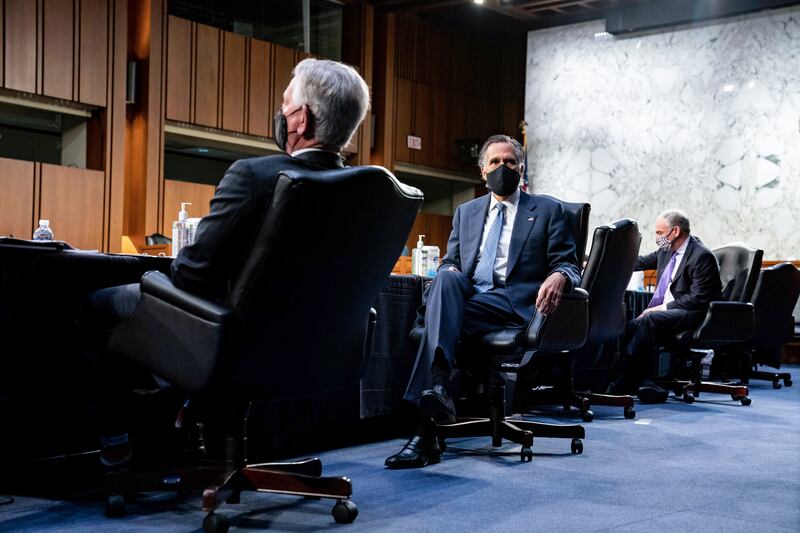Sen. Mitt Romney questioned the need for continuing to keep public schools closed when COVID-19 transmission among teachers and students isn’t significantly different than when the doors are open.
“Science, not teachers unions, should dictate the re-opening of our schools. And the data is in — k-12 schools are not super-spreaders. Schools that can re-open safely should do so. Period,” he tweeted after a Senate Health, Education, Labor and Pensions Committee meeting Wednesday.
The Utah Republican raised the issue in a committee hearing on the nomination of Cynthia Marten as deputy secretary of education. Marten has worked as the superintendent of the San Diego Unified School District since 2013.
Romney asked Marten if she is seeing a difference in the infection rate in communities where schools are open versus those that are closed.
“I don’t believe so, no,” Marten said.
Romney said the research suggests it’s better for schools to be open entirely rather than be on a hybrid system because the back-and-forth exposes students and teachers to more people than does full-time in-person learning. He added that the cost to students’ education is overwhelming and that he can’t understand why people aren’t insisting that schools be open and that they should have reopened a long a long time ago.
“I’m wondering why it is we still have schools closed in your district and around the country given the fact that scientific data doesn’t suggest there’s an additional risk for teachers or students or the community by having them open,” he said.
“One has to wonder whether this is because of a special interest group of some kind that is insistent on not going back to work.”
Marten said it’s a complex topic and each school system has made its own decision based on the local resources, evidence and circumstances to make a safe path forward.
Romney said the scientific evidence is available, but local school districts are making decisions not based on federal guidance.
“I certainly hope that at the Department of Education that you’ll be able to provide guidance that helps the entire nation as opposed to saying to every school district, ‘Hey why don’t you get your own experts to figure this out’ because we do have experts at the national level who said to us it’s OK to open schools and yet the schools remain closed,” he said.
Based on the data available, in-person learning in schools has not been associated with substantial community transmission, according to the Centers for Disease Control and Prevention.
Though outbreaks do occur in schools, multiple studies have shown that transmission is typically lower than — or at least similar to — levels of community transmission, when prevention strategies are in place in schools, the CDC says.
Last week, the CDC relaxed its COVID-19 guidelines for schools, saying students can safely sit just 3 feet apart in the classroom as long as they wear masks but should be kept the usual 6 feet away from one another at sporting events, assemblies, lunch or gatherings.
In early March, Sen. Mike Lee, R-Utah, led five other GOP senators in a letter urging the CDC to revise its guidelines to help reopen schools.
“If the reopening of schools is not achieved, American families and students will only continue to suffer, as there will be even larger developmental, learning and economic losses,” they wrote.
Lee called the new social distancing guidelines for kids in school a step in the right direction.
Rep. Chris Stewart, R-Utah, also recently weighed in on reopening the nation’s schools.
“The science doesn’t only say that kids can safely go back to school, but that continued closures are hurting our children’s mental health,” he posted on Twitter. “It isn’t news that America’s schools can and should reopen, just as Utah’s have successfully done.”
In the committee hearing, Romney also asked Marten how schools would spend the $168 billion headed their way in the latest coronavirus aid package.
Marten said schools are not just grappling with the physical reopening but the social, emotional learning losses that have occurred the past year.
“Students are going to need more time, more attention from their teachers, from paraeducators to adjust. We need smaller class sizes because of some of the distancing guidelines we’ll need to follow,” she said.
Romney said: “Well, the distancing is now 3 feet so that’s probably not going to require new classrooms.”


 alt=Dennis Romboy
alt=Dennis Romboy